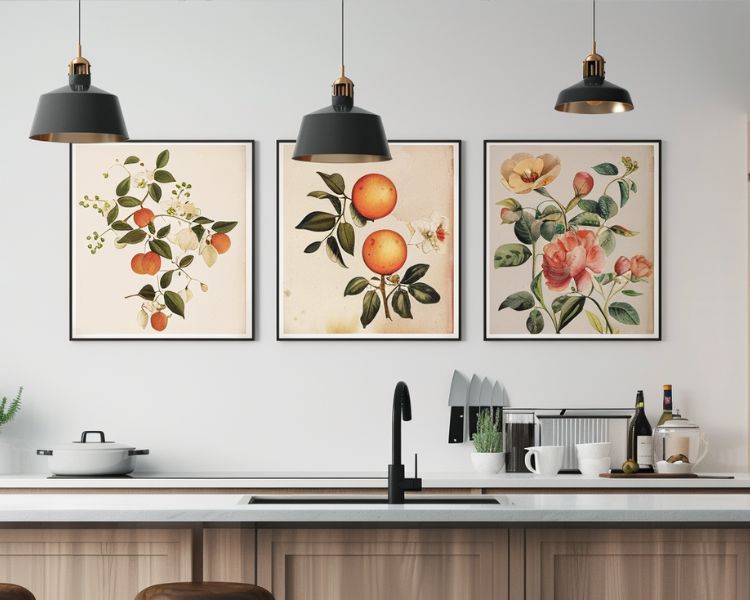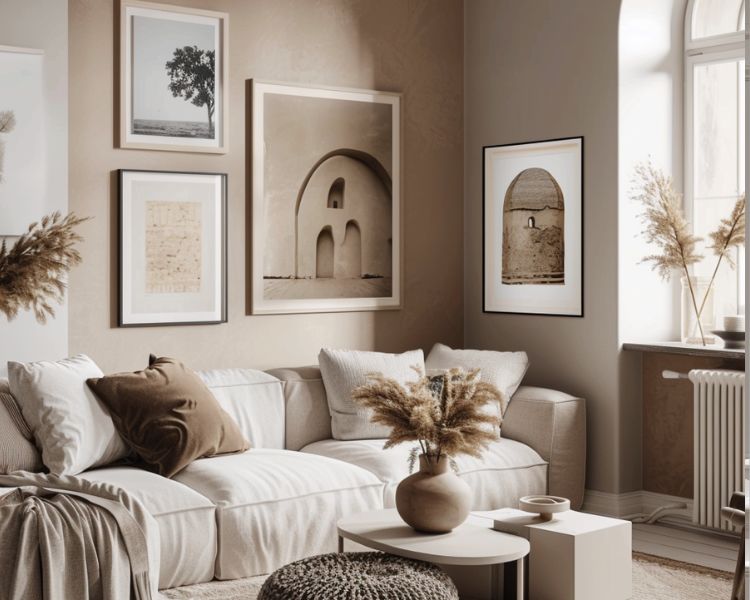Mastering the Art of Matting Techniques
When it comes to showcasing your iconic statement wall art, the devil is in the details. One detail that often gets overlooked is matting. But let's cut to the chase: matting isn't just an afterthought; it's an art form that can make or break your display. So, how do you master this subtle yet impactful technique? Buckle up, art aficionados; we're diving deep into the world of matting.
The Basics of Matting: What You Need to Know
Matting serves as the visual space between your art and the frame, and it's more than just a pretty face. It protects your artwork from damage, such as moisture and direct contact with the glass. But wait, there's more! Matting can also enhance the visual appeal of your bright and bold wall art prints, making the colors pop and the details stand out.
So, what are the Matting Materials you should consider? The most common types are paper mat and acid-free mat. Paper mats are budget-friendly but can damage your art over time. Acid-free mats, on the other hand, are the go-to choice for preserving your art for the long haul.
Choosing the Right Matting Material
Alright, let's get into the nitty-gritty: material selection. If you're all about that Vincent van Gogh vibe, you'll want a mat that does justice to those swirling skies and starry nights. Enter Acid-Free Mat. This type of mat won't yellow over time and is ideal for valuable or antique pieces.
If you're going for a more modern look with your abstract art for the living room, a Cotton Mat could be your best bet. Cotton mats offer a crisp, clean look and are also acid-free, making them a win-win for both style and preservation.
But what if you're into botanical wall art prints? In that case, you might opt for a textured mat to add an extra layer of depth and dimension to your leafy greens and floral scenes.
The Art of Color Coordination

Color can make or break your art display. The mat color should complement, not compete with, your artwork. For instance, if you're displaying shades of blue wall art prints, a neutral or lighter shade of blue for the mat can make the artwork pop. On the flip side, a contrasting color can add drama and draw more attention to the art itself.
When it comes to Mat Color and Frame Color, harmony is key. A black frame with a white mat is a classic combo that works well for black and white wall art prints. But don't be afraid to mix it up! A gold frame with a navy mat can add a touch of opulence to your display.
Matting Techniques for Different Art Styles

Not all art is created equal, and the same goes for matting. If you're a fan of abstract art, consider using a wider mat to let the complex patterns and colors breathe. For vintage prints, a decorative or textured mat can add that extra oomph.
For those into Matting for Abstract Art, less is often more. A simple, clean mat can make your abstract pieces stand out. On the other hand, Matting for Vintage Prints might involve more ornate designs to match the intricate details of the artwork.
The Rule of Thirds in Matting
Are you familiar with the "Rule of Thirds?" It's a technique used by photographers and artists alike to create harmonious compositions. Visualise your mat and artwork split into nine sections by two horizontal and two vertical lines that are the same distance apart. The Visual Balance is best when the focal points of your artwork are placed along these lines or at their intersections.
Applying the Rule of Thirds to your matting can create a more dynamic and visually pleasing display. For example, if you're showcasing sea creatures wall art, placing the main subject—let's say, a majestic whale—in one of the intersecting points can make the whole setup more engaging.
But hey, rules are meant to be broken, right? If you're feeling rebellious, go ahead and center that artwork. Just make sure it serves the piece and doesn't distract from its beauty.
How to Cut Your Mat Like a Pro
So you've picked your mat, and you're ready to get cutting. Hold your horses! Cutting a mat requires precision and the right tools. For Mat Cutting Tools, a bevel cutter and a straight edge are your best friends. And don't forget a cutting mat to protect your surface.
If you're displaying still life wall art prints, a clean cut can make all the difference. For Precision Cutting, always measure twice and cut once. Use a pencil to mark your measurements on the back of the mat, and then let the bevel cutter do its magic.
Preserving Your Art: The Do's and Don'ts
Preservation isn't just for jam; it's crucial for your art too. If you're showcasing valuable pieces like John James Audubon wall art prints, you'll want to go the extra mile. Opt for UV Protection glass and ensure your mat is of Archival Quality.
And let's talk humidity. If you're hanging your art in a room with fluctuating temperatures—like a coastal beachy wall art themed bathroom—consider using spacers between the art and the glass to prevent moisture damage.
Conclusion
Matting is more than just an aesthetic choice; it's an art form that requires attention to detail, a keen eye for design, and the right materials. Whether you're a seasoned collector or a newbie looking to spruce up your neutral beige wall art, mastering the art of matting can elevate your display to a whole new level.
Additional Resources
If you're hungry for more, check out these additional resources to up your matting game. From Matting Tutorials to Matting Supplies, we've got you covered. And if you're in the mood for some shopping, don't forget to browse our collections for the perfect piece to mat and frame.
For more tips on elevating your living spaces with art, check out our blogs on transforming your space with stunning framed wall art prints and the best wall art for living rooms.
FAQ
What is matting technique?
Matting technique refers to the process of placing a mat, a flat piece of material, around a picture or artwork. This serves a dual purpose, improving the artwork's visual attractiveness while also protecting it from damage to the frame.
What are the rules for matting a picture?
While there are no hard and fast rules, some general guidelines include ensuring the mat complements the artwork and frame, using acid-free mats for preservation, and applying the Rule of Thirds for visual balance.
What materials are used in matting technique?
Common materials include paper mats, acid-free mats, and cotton mats. Acid-free and cotton mats are preferred for their archival quality, while paper mats are more budget-friendly but less durable.
What are the advantages of matting technique?
Matting offers several advantages, such as enhancing the visual appeal of the artwork, providing a protective barrier against moisture and direct contact with the glass, and helping to preserve the art for a longer period.
What is one of the reasons for matting an image?
One key reason for matting an image is to draw attention to the artwork. A well-chosen mat can make the colors pop and add depth, making the artwork the focal point of the display.
What is the ratio of frame to mat?
The ratio of frame to mat can vary based on personal preference and the size of the artwork. However, a common ratio is 3:1, where the width of the mat is three times the width of the frame. This ratio can be adjusted to suit the specific needs of the artwork.






